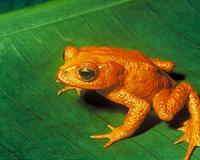| . |  |
. |
Santa Cruz CA (SPX) Mar 05, 2010 Flightless birds, blind cave shrimp, and other oddities suggest a "use it or lose it" tendency in evolution. In the microbial world, an unusual marine microorganism appears to have ditched several major metabolic pathways, leaving it with a remarkably reduced set of genes. This metabolic minimalist is a specialist uniquely suited to performing one very important function: taking nitrogen gas from the atmosphere and "fixing" it into a form that makes this essential nutrient available to other organisms. Nitrogen fixation fertilizes the oceans, controlling overall biological productivity and thereby affecting how much carbon dioxide the oceans absorb from the atmosphere. Jonathan Zehr, the marine microbiologist who discovered the microbe, said it has stubbornly resisted efforts to grow it in the laboratory. But that hasn't stopped his team from determining the complete DNA sequence of its genome. Genome analysis enabled the researchers to reconstruct the organism's unusual metabolic lifestyle. They published their findings in Nature in a paper available online February 21. Zehr, a professor of ocean sciences at the University of California, Santa Cruz, characterized the microbe as an atypical member of the cyanobacteria, a group of photosynthetic bacteria formerly known as blue-green algae. Still lacking a formal taxonomic classification, it is known only as UCYN-A. First detected in the open ocean near Hawaii in 1998, it is now known to be periodically abundant in tropical and subtropical waters throughout the world. "Biogeochemists have never been able to balance the nitrogen budget of the oceans--there seems to be more nitrogen produced than we can account for from known organisms. So this organism may be an important part of the overall nitrogen budget," Zehr said. In a 2008 paper in Science, Zehr's team reported that UCYN-A is completely lacking the genes for a key component of the photosynthetic apparatus. The missing parts, known as photosystem II, carry out the stage in photosynthesis that generates oxygen by splitting water molecules. This is significant because oxygen inhibits nitrogen fixation. Most nitrogen-fixing cyanobacteria carry out photosynthesis during the day and nitrogen fixation at night, but UCYN-A can fix nitrogen all day long. The new paper extends the list of UCYN-A's missing metabolic pathways to include, among other things, a process central to aerobic metabolism known as the TCA cycle or Krebs cycle. It also lacks the Calvin cycle, which uses the carbon from carbon dioxide to build sugars, and it is unable to synthesize about half of the 20 essential amino acids. "This thing is really stripped down," said James Tripp, a bioinformatics specialist at UCSC and lead author of the Nature paper. "My analysis indicates it has to have an outside source to obtain sugars, amino acids, and two out of the four bases needed to make DNA." Tripp performed the genome analysis reported in the paper. He worked closely with scientists at 454 Life Sciences, a Roche company based in Branford, Conn., that specializes in high-throughput DNA sequencing technology. The researchers applied new genome sequencing and assembly techniques to produce the complete genome sequence from natural samples of DNA. Because UCYN-A cannot be cultured, researchers used a cell-sorting technique called flow cytometry to obtain concentrated samples of the microbe from ocean water, and then extracted DNA from the cells for sequencing. Although UCYN-A must depend on other organisms for key nutrients, the researchers have found no evidence that it lives in a close symbiotic association with another microorganism. Zehr said the failure to find another organism closely associated with it suggests two possibilities. "It might live in a cryptic association that's very hard to sample because it's fragile and just falls apart, or it may respond to blooms of other phytoplankton and live in the soup of nutrients excreted by other organisms," he said. One of the striking things about UCYN-A's metabolism is that it lacks essential pathways other organisms use to generate energy for their cells. "Nitrogen fixation takes a lot of energy, but this thing has figured out how to fix nitrogen without the normal pathways used to fuel it in other organisms," Zehr said. "It presents a real evolutionary and ecological paradox."
Share This Article With Planet Earth
Related Links University of California Santa Cruz Darwin Today At TerraDaily.com
 El Nino And Pathogen Killed Costa Rican Toad
El Nino And Pathogen Killed Costa Rican ToadNew York NY (SPX) Mar 05, 2010 Scientists broadly agree that global warming may threaten the survival of many plant and animal species; but global warming did not kill the Monteverde golden toad, an often cited example of climate-triggered extinction, says a new study. The toad vanished from Costa Rica's Pacific coastal-mountain cloud forest in the late 1980s, the apparent victim of a pathogen outbreak that has wiped ou ... read more |
|
| The content herein, unless otherwise known to be public domain, are Copyright 1995-2010 - SpaceDaily. AFP and UPI Wire Stories are copyright Agence France-Presse and United Press International. ESA Portal Reports are copyright European Space Agency. All NASA sourced material is public domain. Additional copyrights may apply in whole or part to other bona fide parties. Advertising does not imply endorsement,agreement or approval of any opinions, statements or information provided by SpaceDaily on any Web page published or hosted by SpaceDaily. Privacy Statement |